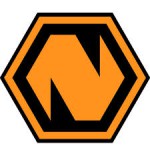Article by me, first published on Openlogic.com Whether you are a system administrator or a developer, sometimes you need to consider the use of memory in GNU/Linux processes and programs. Memory is a critical resource, and limited memory plus processes that use a lot of RAM can cause a situation where the kernel goes out […]
Article by Mark
There has always been a silent war between Windows and GNU/Linux fans. The first one is developed by Microsoft and definitely not free of charge, while the second is not that widely used, but available to anyone as open source software. Linux comes with numerous pros for those that use it; over time, many people have realized these advantages and thus the use of Linux noted a growth of 0.11 points in 2015, reaching a 1.74% market share.
Nevertheless, the thing that’s point of interest in this article is how the increased use of Linux devices affected the growth of gaming on Linux. Linux gaming actually refers to developing and playing video games on this open source operating system. As most Linux fans probably know, the development of this idea started as an extension of already existing Unix gaming. It’s believed that the commercial Linux gaming platform was born back in 1994 when the popular game Doom was ported to Linux by Dave D. Taylor. Later on, Taylor was involved in many other projects that only further helped Linux gaming to become reality. For example, working in his free time, in 1996 he collaborated with id Software in order to make the game Quake available to Linux.


